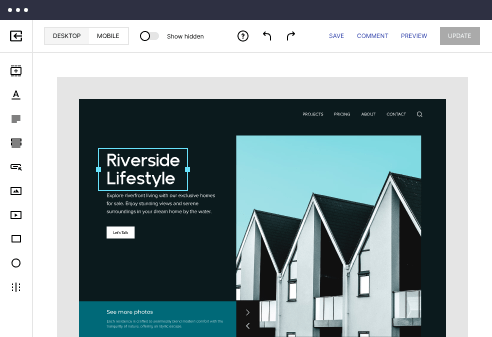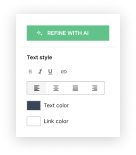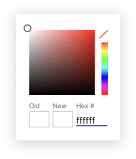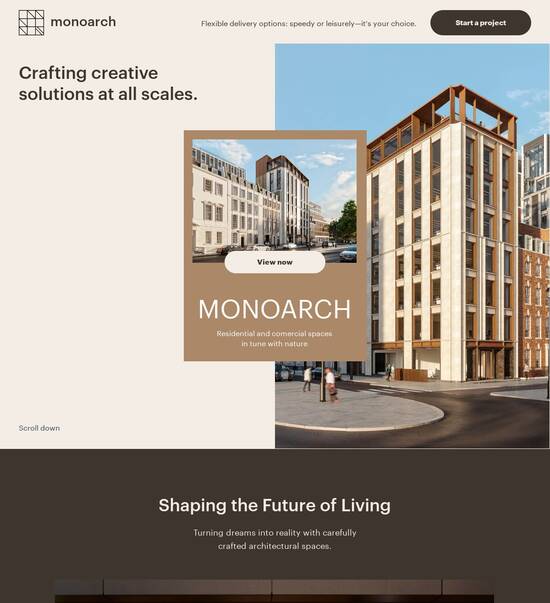
Laravel optimized blog post page template
Explore Similar TemplatesAbout template
Supercharge your blog post page with Laravel for outstanding performance! Learn more today.
Recommended templates
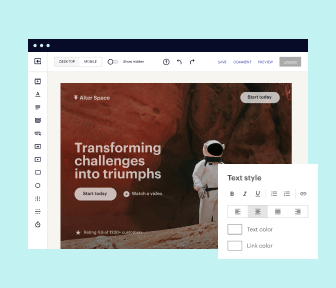
Easy to build without coding
With the intuitive drag-and-drop builder, anyone on your team can create high-converting pages without any knowledge of code or design. Make enhancements to your landing page with custom widgets using Javascript, HTML/CSS, or third-party scripts.
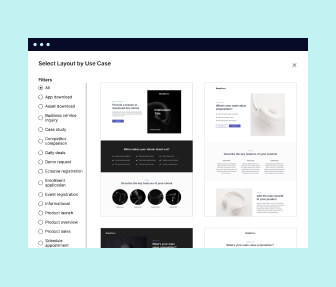
Multiple layouts for any industry and goal
Select from 500+ landing page layouts built to boost conversions across industry-specific scenarios. Customize them by adjusting fonts, adding images, and generating on-brand content with the AI assistant. Quickly scale with Instablocks® and Global Blocks that you can save, reuse, and update globally.
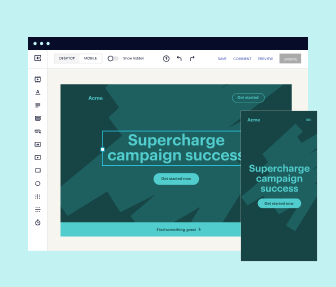
Loads fast and looks polished on any device
Every template is responsive, which means they present professionally on any device and load blazingly fast with our Thor Render Engine. You can also power them up with Google AMP technology to deliver an unparalleled mobile experience and drive higher conversions.
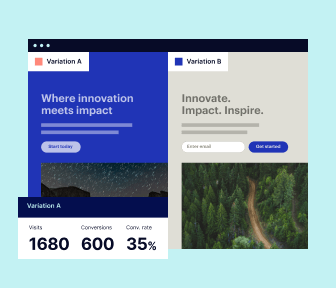
Robust analytics & experimentation
Get real-time updates and reporting across all your devices, showing the number of visitors, conversions, cost-per-visitor, and cost-per-lead. Launch AI-powered experiments, run A/B tests, and use heatmaps to analyze user behavior, then optimize your landing page to maximize conversions.
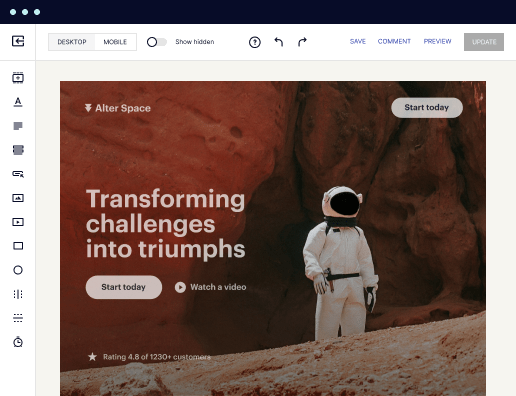
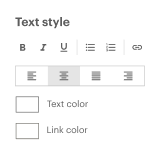
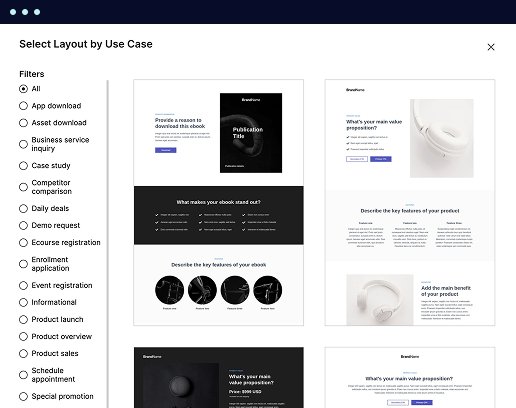
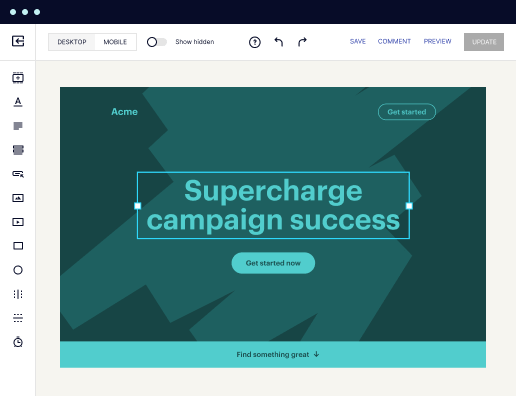
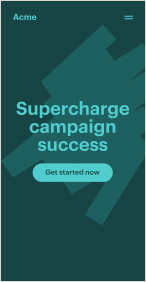
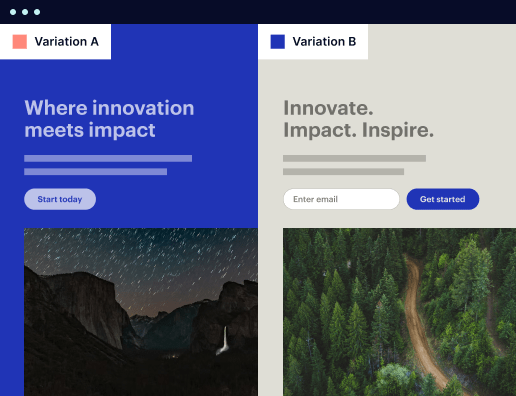
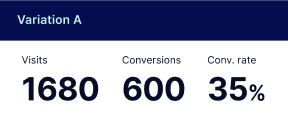
Easy to build without coding
With the intuitive drag-and-drop builder, anyone on your team can create high-converting pages without any knowledge of code or design. Make enhancements to your landing page with custom widgets using Javascript, HTML/CSS, or third-party scripts.
Multiple layouts for any industry and goal
Select from 500+ landing page layouts built to boost conversions across industry-specific scenarios. Customize them by adjusting fonts, adding images, and generating on-brand content with the AI assistant. Quickly scale with Instablocks® and Global Blocks that you can save, reuse, and update globally.
Loads fast and looks polished on any device
Every template is responsive, which means they present professionally on any device and load blazingly fast with our Thor Render Engine.
Robust analytics & experimentation
Get real-time updates and reporting across all your devices, showing the number of visitors, conversions, cost-per-visitor, and cost-per-lead. Launch AI-powered experiments, run A/B tests, and use heatmaps to analyze user behavior, then optimize your landing page to maximize conversions.
All the features you need to build lead-generating landing pages
Explore more featuresLearn how to build top-performing landing pages for any goal
FAQs
Leading the way in building high-performing landing pages





Transform Your Marketing with Instapage: A Step-By-Step Guide
In today’s competitive landscape, understanding how to optimize your digital marketing campaigns is essential. Instapage stands out as the ultimate landing page and conversion rate optimization platform that provides marketers with powerful tools to boost their campaign effectiveness. This comprehensive guide walks you through strategies that can help maximize ROI using Instapage, tailored specifically for businesses across various verticals in the USA.
Understanding the Importance of Landing Pages
Landing pages serve as the critical first point of contact for potential customers. By utilizing Instapage’s 100+ high-converting templates, you can quickly create pages that grab attention and encourage action. Investing time in crafting effective landing pages is vital for driving traffic and converting leads.
- High-Converting Templates: Pre-built designs save time and enhance user experience.
- Lead Generation Elements: Integrated forms and calls to action encourage conversions.
- A/B Testing: Experiment with different layouts and messages to hone in on effective strategies.
Creating Your First Landing Page with Instapage
Building your first landing page is a straightforward process with Instapage’s user-friendly platform. Start with selecting a template that aligns with your campaign goals, and customize it to reflect your brand’s unique voice.
- Choose a Template: Select one of the high-performing templates that best fits your campaign.
- Customize Content: Easily modify text, images, and CTAs to resonate with your target audience.
- Publish and Test: Use built-in tools to launch the page and test its effectiveness before a full rollout.
Optimizing for Higher Conversions
Once your landing page is published, the next step is optimization. Use Instapage’s analytics dashboard to gather insights on user behavior. Conduct A/B tests to improve performance continuously.
- Heatmaps: Understand where users click and navigate on your landing pages.
- A/B Testing Tools: Test variations of your page to determine the most effective layout.
- Detailed Analytics: Track user interactions over time for ongoing improvements.
By focusing on these areas, you can drive the success of your digital marketing campaigns.
Emphasizing personalization helps engage users on a deeper level, making your landing pages not just effective, but also user-centric.
Ready to elevate your digital marketing strategy? Start your free trial with Instapage and see how effortless conversion optimization can be.
Laravel optimized blog post page template
Understanding the Laravel framework
Laravel is a robust PHP framework established to simplify web application development. Created by Taylor Otwell in 2011, it has rapidly gained immense popularity among developers due to its elegant syntax and powerful features. Over the years, Laravel has evolved significantly, introducing new functionalities and enhancing performance, which makes it an excellent choice for modern web applications, particularly when it comes to building blogs.
Key features of Laravel include a well-organized architecture, built-in authentication, and a templating engine called Blade. The framework promotes the MVC (Model-View-Controller) design pattern, which helps in managing the separation of logic, UI, and data, essential for building an optimized blog post page template. For developers and end-users alike, grasping the significance of efficient templating is critical.
Streamlined development process for coding efficiency.
Improved user experience with faster load times and intuitive navigation.
Easier maintenance and scalability of the application.
Optimized templates enhance the user experience by ensuring quick page loads and a seamless interface. These features directly influence how users interact with your content, ultimately impacting engagement and conversion rates.
Embracing the Laravel ecosystem for blogging
Laravel stands out as the preferred choice for blogging projects due to its robust PHP capabilities and the expertise that developers possess in using it. This widely adopted framework has a strong community that contributes to countless resources, tutorials, and packages, making it easier for newcomers to navigate their blogging project. Leveraging Laravel’s capabilities, developers can streamline their workflows and increase productivity.
When structuring a blogging project with Laravel, it is essential to access the core components that form the backend of the application, such as Eloquent ORM for database interactions, routing for managing URLs, and Blade templates for rendering views. Thoughtful planning and organizing ideas for blog posts ensures that the architecture remains clean and performs efficiently. This foundational step is critical for creating an optimized blog post page template.
Core features of an optimized blog post page template
An effective user interface and experience design (UI/UX) is paramount for any blogging platform. Aesthetic appeal combined with a responsive design caters to diverse devices, ensuring that users have a pleasant reading experience no matter the format they choose. Moreover, an intuitive navigation flow tailored for your target audience enhances usability, leading to prolonged engagement.
Performance optimization techniques are equally vital when designing blog post templates. Efficient loading times can be achieved through techniques such as utilizing caching strategies and image compressions. Moreover, minimizing HTTP requests through careful planning of resources can significantly improve page load speed. These techniques not only meet the needs of modern users but also satisfy search engine algorithms, which are increasingly focused on user experience.
Building the perfect blog post page template
When it comes to setting up a Laravel project for a blog, the first step involves using command line tools to establish an initial project structure. Laravel's Artisan command allows developers to create a new application in a matter of seconds, laying the groundwork for a feature-rich platform. Recommended packages such as Spatie for role management or Laravel Media Library for managing media files can significantly augment functionality.
Crafting the layout of your blog post page template requires familiarity with Blade templating syntax, facilitating the building of dynamic views. Utilizing Blade components allows you to create reusable UI elements, streamlining development and ensuring consistency across your site. Additionally, incorporating modern features like dynamically loading content through AJAX can enhance user engagement while integrating multimedia elements such as images and videos enriches the storytelling aspect of the blog.
Backend considerations for an optimized blogging experience
Managing content in Laravel is exceptionally streamlined through the Eloquent ORM, which simplifies the process of defining models and their relationships. This claims a favorable position in your blogging project as it allows for swift and efficient querying of posts and comments. By understanding how to leverage Eloquent relationships, developers can facilitate a more optimized backend, resulting in faster data retrieval and manipulation.
User authentication and role management are pivotal components for maintaining a secure blogging platform. Laravel offers robust solutions for managing user roles, ensuring appropriate access levels for content creation and editing. Implementing strategies for secure content access, like middleware and policy checks, further fortifies your blog, making it a secure environment for both content creators and readers alike.
Enhancing reader engagement through interactive features
Incorporating interactive features, such as comment systems, can significantly enhance reader engagement. By building a native commenting feature, you encourage community interaction and provide readers a space to share their thoughts. Alternatively, third-party comment systems like Disqus can be integrated to offer additional functionalities that enhance user experience.
Social sharing capabilities alongside SEO optimization are essential aspects of a successful blog. Social proof is a valuable tool in blogging, as shares and interactions across platforms can extend reach and foster a community around your content. Implementing best practices for SEO ensures that your blog remains visible in search results, making it more likely for potential readers to discover your work.
Testing and debugging for optimal performance
Testing and ensuring functionality is crucial before launching your blog to the public. Utilizing testing tools such as PHPUnit for backend and Laravel Dusk for end-to-end testing guarantees that all features work as intended. In addition, taking into consideration browser compatibility is vital, ensuring that the blog functions well across multiple platforms and devices.
Once live, troubleshooting common issues must be a priority. Debugging backend errors can often be done by carefully examining Laravel's logs and using tools like Ray for faster diagnosis. On the frontend, recognizing and resolving UI/UX glitches is crucial for maintaining professionalism and user satisfaction; developers should be vigilant about conducting regular reviews and updates.
Real-world applications and use cases
Laravel has become the backbone for numerous successful blogs and applications around the globe. These projects often highlight the framework's scalability and versatility, making it a prime choice for developers aiming to create content-rich platforms. Furthermore, lessons learned from successful Laravel blogging projects can provide valuable insights into best practices and strategies for new developers.
Looking ahead, trends in blogging with Laravel are promising. Developers can expect continuous enhancements to the framework, with a focus on improving performance and user experience. Moreover, as content creation evolves, Laravel’s capabilities will adapt, making it an exciting time for those entering the blogging community.
Resources for aspiring Laravel developers
For those eager to dive deeper into Laravel, several resources are invaluable. The official Laravel documentation is comprehensive and regularly updated, serving as a primary reference point. Beyond documentation, engaging with community forums, tutorial websites, and open-source projects can significantly enhance learning and development. Collaborating with peers not only enriches skills but also expands one's network within the developer community.
Participating in local and online events fosters knowledge sharing and opens doors for collaboration on projects. Being part of a community that focuses on Laravel and PHP development can accelerate growth and provoke innovation, making networking a vital component of an aspiring developer's journey.
Continued learning and development
As the Laravel framework continues to evolve, exploring advanced features such as queues, events, and broadcasting introduces new dynamics to blogging projects. These features help in managing traffic and enhancing user experience, especially during high-traffic events. Also, Laravel Nova provides developers with tools for building custom admin pages, offering tailored content management capabilities.
Encouraging innovation and experimentation is crucial for developers looking to stay ahead. Incorporating cutting-edge technologies into blogging not only enriches the production process but also caters to a diverse audience. By fostering a culture of open-source contributions, developers not only leverage existing resources but also give back to the community, propagating an ongoing cycle of learning and improvement.
Ready to skyrocket conversions?
Supercharge your ad campaigns with high-performing landing pages
Get started